6 Chapter 6
Examining Complex Societies

Learning Objectives:
- Identify key characteristics correlated with complex society
- Explain the transition to agriculture and its consequences
- Compare and contrast explanations for the rise of complexity
- Examine the material culture and social, political, economic, and ideological aspects of one of the first complex societies
Understanding Social Complexity
We learned in Chapter 4 that humans and their hominin ancestors lived in small groups of mobile hunters and gatherers for millions of years. Why suddenly around 5000 years ago did they stop moving around and start living in the same place? Why and how did they begin to build large towns and eventually cities? Was this process inevitable? Is it the “natural state” of human existence? These questions relate to a major area of research in anthropological archaeology – the study of complex societies or “civilizations”. Before addressing these questions it’s important to define what we mean by complexity and civilization.
Traditionally, ancient societies like Old Kingdom Egypt, the Classic-period Maya, or the Inca Empire were referred to as “civilizations”. While there is nothing inherently negative about this term, the way it was used in the early days of anthropology was not objective at best and racist at worst. The 19th century anthropology Lewis Henry Morgan (Figure 6.1) was one of the first to study and compare ancient societies using archaeological remains. Like many scholars of his time, he was very much influenced by Darwin’s new theory of evolution. Morgan and other social scientists, like sociologist Herbert Spencer, tried to apply the idea of evolution to contemporary cultures. They created a model we now refer to as unilineal evolution, a late 19-century evolutionary theory that viewed all human societies as evolving along a common track from simple hunting and gathering communities to literate civilizations. Morgan believed that every culture passed through stages of cultural evolution just as living organisms pass through stages of biological evolution. He
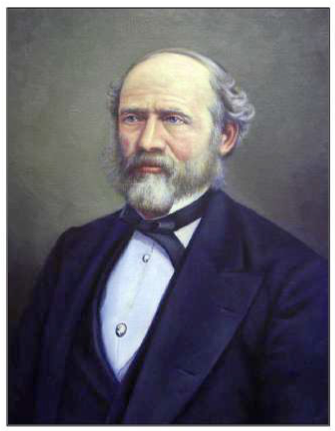
Figure 6.1: Lewis Henry Morgan proposed an ethnocentric “three-age” system within his framework of unilineal evolution
even went so far as to propose three specific stages of cultural evolution that he argued every culture had passed through or were currently experiencing. These phases included what he called barbarism, savagery, and civilization. A culture would advance to the next stage when they evolved a certain set of material technologies, subsistence strategies, or kinship organization. For example, savages would advance to barbarians once they learned metalworking. And barbarians would be become civilized once they invented writing.
In addition to identifying these stages in ancient cultures and classifying those cultures accordingly, Morgan also did the same to living cultures. In this view 19th century cultures that exhibited features of savagery would be classified as savages, barbarianism as barbarians, and civilization as civilized. This meant that non-industrial cultures living an agrarian, pastoral, or hunter-and-gatherer way of life were considered lesser than the civilized white people of the Western world. Furthermore, these non-Western cultures were considered “stuck” in the preceding stages of unilineal evolution or evolutionarily static. This is where and when the term “primitive” arose to describe non-Western non-industrial cultures. This is a racist, subjective, and incorrect view of cultural evolution. The next generations of anthropologists showed us how each culture was a product of its particular environment and historical circumstances. Non-industrial and non-Western cultures were not primitive or evolutionarily static, they were entirely adapted to survival in their own specific circumstances. This theoretical approach was called historical particularism, and was articulated by American anthropologist Franz Boas, (Figure 6.2) and later advanced by his students Ruth Benedict and Margaret Mead.
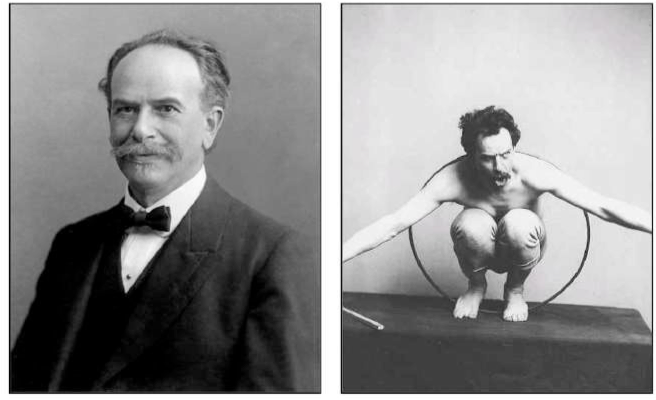
Figure 6.2: Franz Boas emphasized long-term fieldwork and intensive participant observation to study other cultures, as he demonstrates here performing an indigenous American rite
While these revisions to cultural evolutionary theory helped remove our western bias, they also created a challenge for any archaeologist studying ancient cultures. After all, cultural evolution does exist. Some cultures get bigger over time, build cities, practice agriculture, and exhibit permanent monumental forms of material culture. How are we supposed to define, study, analyze, and interpret these cultures? This is where the notion of “complexity” comes in to play.
We define complexity similar to archaeologist Kent Flannery (1972). Something that is complex – an organism, institution, or society – is both diverse and integrated. What we mean by diverse is that it has many different parts that do many different things. In this sense we’re talking about both the number of parts and the role these parts play in a larger system. These multiple different parts are also integrated – or better yet – dependent upon one another. If a single part or a group of parts begins to fail, the function and stability of the entire system is at risk. If we take complexity and apply it to the study of cultural evolution, we can talk about differences between cultures in a more objective empirical way without being implicitly or explicitly biased towards Western societies. We can categorize and compare cultures along a spectrum of complexity as opposed to a value-laden linear scheme of savagery, barbarism, and civilization. We never assume that all cultures pass through a specific set of cultural evolutionary stages. Now that we have defined our terms, how do we go about studying complex societies in the archaeologically record? What material remains indicate a culture was complex? In other words, what are the archaeological correlates of complexity?
A complex society is defined by at least seven correlates: cities, surplus, agricultural intensification, specialization, inequality, and multifaceted political and economic systems. It is important to note, however, that not all complex societies exhibit all of these correlates. In addition, it is also possible for some smaller scale societies to exhibit some of these correlates. In determining if a society is complex, archaeologists use both the number (quantity) and kind (quality) of correlates of complexity in this list. Cities are permanent nucleated settlements of large groups of people that contain living areas, administrative areas, ceremonial precincts, and perhaps market areas (Figure 6.3).
The existence of cities implies a settlement hierarchy or a way of arranging settlements into a hierarchy based upon their population or some other criteria. Usually these hierarchies have at least three or four levels: for example, hamlets, towns, cities, and regional centers.
Complex societies show signs of food surplus – an excess of production or supply over demand. A surplus is needed to feed all the people living in cities and cover any prolonged periods of food shortage. Surpluses can be seen archaeologically through the identification of state and household storage facilities and artifacts.

Figure 6.3: Cities like New York are complex systems of peoples, places, and things
Surpluses are created by agricultural intensification or an increase in agricultural production per unit of inputs (such as labor, land, time, seed, or other resources). Ancient populations dramatically modified their landscapes in an effort to produce as much food as possible. Agricultural intensification can take the form of water features like irrigation canals, aqueducts, and reservoirs, or modifications to the landscape like terraced fields on hillsides or raised fields in swamps.
Specialization occurs when people start making more than they need of a certain type of product, which they can trade or sell for other goods. Specialization in ancient complex societies is most commonly seen in craft production industries like pottery making and stone tool production. Households may specialize in the production of one product, or stand-alone workshops may appear at certain sites.
Inequality or the unequal distribution of material and social resources is a hallmark of all complex societies and is related to bureaucracies (a system of government in which most of the important decisions are made by state officials rather than by elected representatives). Unlike smaller scale societies, in complex societies political groups are not solely defined by kinship. Officials can be appointed or elected to their positions.
Lastly, complex societies are characterized by a complex economic system that usually exhibits a combination of reciprocal, redistributive, and market mechanisms. Artifact distributions, evidence of production, and architectural groupings can help identify these three kinds of exchange.
There is also one final correlate of all complex societies that we often don’t like to think about – all complex societies eventually collapse (break down or disintegrate). The study of the collapse of complex societies (like their development) is an entire sub-discipline within the study of complexity and we will touch upon in this chapter in reference to the Classic-period Maya.
Agriculture and the first complex societies
The first complex societies arose in Mesopotamia, Egypt, China, the Indus Valley, the island of Crete, Mesoamerica, and South America. Some complex societies in these areas are referred to as primary states (Figure 6.4) because they are the first socially stratified and bureaucratically governed societies with at least four levels of settlement hierarchy (hamlets, villages, cities, and a centralized capital). While complex societies arose in these different areas at different times, if we look at the dates of development we see some remarkable similarities that provoke a number of questions. Why did some of the earliest complex societies develop within a few thousand years of one another? Why do these dates all cluster around 5000-3000 BC? Why didn’t our hominin ancestors live in cities and develop agriculture? The answers to these questions can be found in environmental and climate data.
Our early hominin ancestors and even early Homo sapiens could not engage in agriculture because climatic conditions were too cold, dry, and erratic. We currently live in the Holocene Epoch. It began about 11,700 years ago after the last glacial period. The Holocene is dramatically warmer, wetter, and exhibits a more predictable smaller range of temperatures than the preceding Pleistocene Epoch. It is this warmer, wetter, and more stable environment after approximately 11650 years ago (or 9000 BC) that allowed humans to begin experimenting with sources of subsistence other than hunting and
Figure 6.4: The Nile Valley in Egypt was home to a “pristine” or “primary” archaic state
gathering. However, environmental and geographic conditions alone do not explain why some areas developed agriculture and others didn’t. Agriculture arose in different areas of the Old World for a variety of different reasons. The reasons for the adoption of agriculture are matter of debate among archaeologists. But before we get to these reasons, it’s important we define some terminology related to agriculture and domestication of plants and animals.
Agriculture or the human subsistence pattern in which the majority of food comes from domesticated species is the product of an extended process. It begins with cultivation or aiding and manipulating plant growth through human action. This may include intentional weeding and tending to wild stands of resources, unintentional or intentional dropping of seeds in different areas, intentional experimentation with cross-pollination, or the adoption of small house gardens. Husbandry refers to a similar process involving animals and can include capturing, herding, taming, and tending to wild animals without crossbreeding animals and promoting genetic change. The next step is domestication or the genetic alteration of plants and animals by human selection, conscious or not (Figure 6.5). Over time, this process leads to animals and plants depending on humans with many species unable to reproduce without human assistance. Over time domestication becomes targeted to produce plants that create higher yields and animals that are more tame and offer larger supplies of meat. This process took a number of forms in different areas of the world, and a various archaeologists have offered different hypotheses on how and why it happened.
Figure 6.5: Ancient people in North and Central America domesticated multiple types of corn or maize
The Oasis Hypothesis was proposed by V. Gordon Childe and is based on the site of Jericho located in the West Bank region of Israel, which is nourished by a perennial spring called “Spring of Moses” (Ain Musa). Childe believed that the retreat of glaciers caused shifting of rain belts, causing desiccation (drought) all over the Near East; humans, plants, and animals were drawn together at the few dwindling oases like the one at Jericho. This he argued led to population growth because of the large concentration of people and animals in the same place (Figure 6.6). The main problem with the oasis theory is that wild forms of the later domesticated plants and animals were not native to the alluvial valleys in late Pleistocene or early post-Pleistocene times. Also, later excavations of the site by Kathleen Kenyon (one of the few women archaeologists in the 1950’s) found that Jericho was actually shifting to agriculture later than some other sites that were not on oases, like Mureybit and Ali Kosh. Other research also showed the paleoenvironment to be much wetter in the post-glacial period.
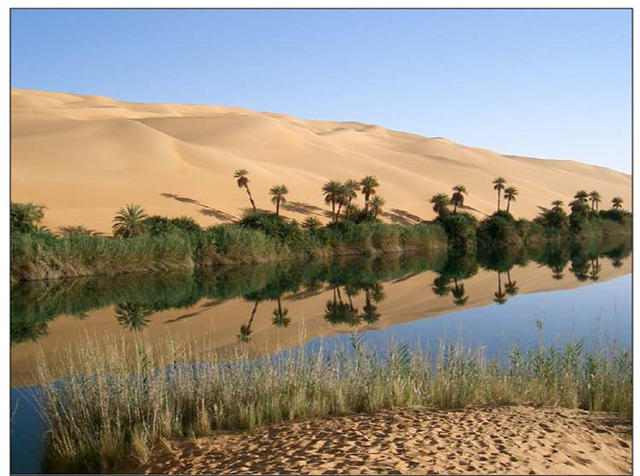
Figure 6.6: Childe believed that oases like this one were responsible for the domestication and eventual development of agriculture
Robert Braidwood proposed the Natural Habitat Hypothesis (also Nuclear Zone Theory ) based on his excavations at the site of Jarmo, which was located in the heart of the fertile-crescent. The fertile-crescent is a crescent-shaped region in the Middle East that includes the modern day nations of Iraq, Israel, Palestine, Syria, Lebanon, Egypt, Jordan, and parts of Turkey and Iran. He believed domestication to be the inevitable by- product of intelligent, large-brained humans intersecting with a warm, postglacial environment with suitable resources. Nuclear areas were areas in which the plants and animals are found in abundance in their natural habitats. Braidwood argued that Jarmo, located in the hilly flanks region of the Zagros Mountain foothills, was an ideal “nuclear zone” for early domesticates. He argued that people in nuclear zones gradually developed the technology to exploit these resources (e.g., grinding stones and pottery) and recognize their productive potential. Communities became larger and more sedentary as they relied on these productive resources and began to experiment with artificial control of their breeding and distribution, eventually leading to full domestication and sedentary life. This theory directly contradicted Childe. Unfortunately for Braidwood, recent research shows Jarmo was not one of the earliest sites with domesticated plants & animals. Other sites like Ali Kosh, Mureybit, and Abu Hureyra are outside Nuclear Zones (Figure 6.7).
Figure 6.7: The Fertile Crescent in the Middle East is considered a naturally resource rich nuclear zone
Esther Boserup proposed the Population Pressure Hypothesis arguing that it was population pressure that led early farmers to domesticate plants and adopt agriculture. However, there are many ways that populations can, consciously or unconsciously, control their rate of population growth. These include post-partum sex taboos, extended lactation times, and even infanticide – all of which have been documented among historical groups of hunter-gatherers.
Lewis Binford and Kent Flannery followed an ecological-functionalist paradigm that population pressure was a prime mover in agricultural intensification. Why did population increase? Binford says that people were forced inland by flooding at the end of the Mesolithic. Growing populations were forced into marginal areas with environmental stress, production intensified (also called The Edge Hypothesis ) (Figure 6.8). Flannery modified this hypothesis, combined it with Braidwood’s ideas about nuclear areas, and then added emphasis on seasonality and scheduling. These scholars believed that when the plants that were native to the fertile-crescent were taken outside of it, only the hardiest and/or mutants of the species would survive and the genetic changes that lead to domestication came very quickly. This hypothesis is somewhat supported in that many sites that show early evidence of domestication lie just on the edge or outside of the Fertile Crescent (i.e., Ali Kosh, Mureybit, and Abu Hureyra). At the same time the hypothesis does not account for why populations grew in the first place.
In a very different vein, some archaeologists focused on a Social Hypothesis. Barbara Bender and Brian Hayden argued that the transition to farming and food storage and surplus could not be understood simply in terms of environment and population (Figure 6.9). They believed it was more related to the ability of certain individuals to accumulate
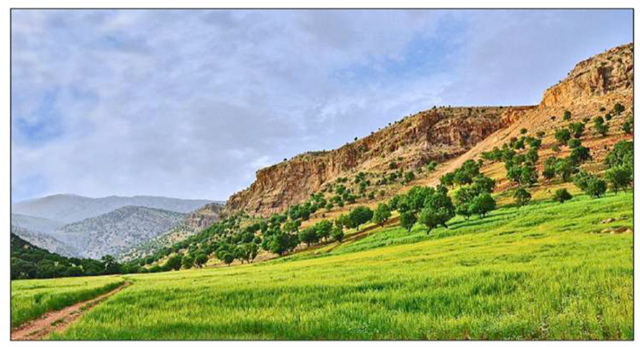
Figure 6.8: Some archaeologists argued domestication took place on the edge of the Fertile Crescent in areas like this one, the foothills of the Zagros Mountains
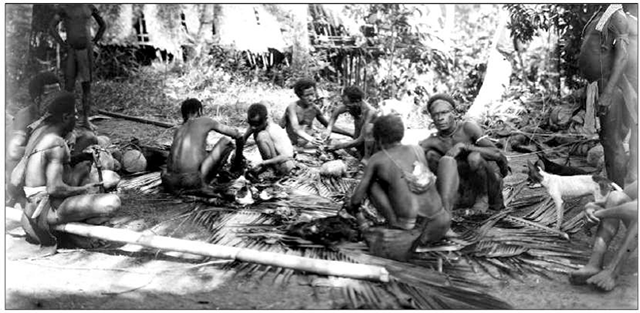
Figure 6.9: Hayden and Bender argue domestication and agriculture arose of feasting, like this one being prepared in Historic-period Papua New Guinea
a surplus of food and to transform that surplus into more valued items (e.g., rare stones, metals, pottery). Agriculture was a means by which social inequality emerged and egalitarian societies became hierarchical. Bender and Hayden rely on the idea that some humans have an innate desire to gain power and prestige – these individuals are often referred to as aggrandizers. Unfortunately, Bender and Hayden don’t explain how or why this is. But certain sites do support these theories. At Gobekli Tepe there is evidence of large scale feasting as well as communal building of symbolic structures before the advent of agriculture.
So who is right? The truth is that none of these theories account for the shift to agriculture in all times and all places. Certainly elements of all of these theories were factors in this dramatic shift – populations were growing, sites appeared on the margins, and social factors were always at play. What are clear were the broader impacts of agriculture and farming on cultural systems. The most noticeable changes occurred in relation to, 1) settlement patterns, 2) material culture, 3) warfare, and 4) agricultural intensification.
With the adoption of agriculture small groups of people no longer traveled frequently to be closer to seasonally available resources – they stayed in the same place or became sedentary. Because they no longer had to move around they had the ability to create more permanent material culture including heavy, less portable artifacts, and of course monumental architecture. Because people were investing so much in the land they were farming, they valued it, and needed to protect it from outsiders. We see a marked increase in scale of violent conflict in agricultural societies. Finally, as population centers grew, so did the need for more surpluses to support that population. This led to advances in agricultural technologies and evidence of intensification such as irrigation systems, reservoirs, raised fields, terraces, and other ways to extract more products from the land. As we mentioned earlier, this increasing process of complexity led to the rise of the primary states. But why and how did this happen? We turn to that question now.
Rise of Primary States
A number of scholars have presented hypotheses about the rise of primary states. One of the earliest comes from archaeologist V. Gordon Childe who thought about the rise of the state in terms of a “revolution”. He did not mean this term to imply that the rise of the state happened suddenly, but that there was a tremendous technological and social shift that occurred to bring it about.
Childe saw cities and states the direct outcome of an Urban Revolution after the transition to farming. Farming allowed surpluses to be generated, which made it possible for some people to become divorced from food production. This resulted in the emergence of a new category of full-time specialists including crafts people like metalworkers and potters, but also administrators, warriors, and priests. Where agriculture was particularly productive, the numbers of full-time specialists could grow, leading to the development of even more complex societies with increasing divisions of wealth and expertise. These eventually coalesced in cities and states.
A major problem with Childe’s explanation is his belief in the Myth of Leisure Time as it is called by Marshal Sahlins. What this means is Childe believed that humans in hunter-gatherer societies had difficult lives and spent much of their time trying to eek out a living and sustain them from the environment. Childe thought that with the adoption of agriculture people suddenly had a great deal of free time that they could devote to craft production and economic specialization, supported by surplus produced from agriculture (Figure 6.10). However, anthropologists like Sahlins presented evidence to show that nomadic hunter-gatherer populations actually have more leisure time than agriculturalists, and better nutrition. This undermines Childe’s thoughts for why this development came to be in the first place. Childe also does not explain why surpluses came about in the first place.
Karl Wittfogel made an argument for what he called a Hydraulic Hypothesis in the early 20th century. He argued that complex societies arose in arid areas (such as China, Egypt, and Mesopotamia) as a mechanism to control large-scale hydraulic networks: such as systems of irrigation, drainage, and flood control (Figure 6.11). He argued that only a complex state organization can regulate such systems and raise the corporate labor needed to handle the problems and activities associated with large-scale irrigation agriculture. Large-scale irrigation requires the construction, enlargement, cleaning, and maintenance of canal systems; scheduled allocation of water; and the arbitration of potential conflicts between farmers. So irrigation required centralized state bureaucracies and highly centralized (despotic) states.
Figure 6.10: Childe argued complex society developed largely in part to the advent of craft-specialization, specifically metal working
Figure 6.11: Wittfogel believed complex society developed out of a need to manage water resources, which can be seen in the materialization of monumental construction like this ancient aqueduct in Spain
Robert McCormick Adams attempted to test this theory in Mesopotamia and found evidence that showed irrigation systems were organized at local levels (not at the level of the state), and that major irrigation systems appear much later in the archaeological record (after complex society already emerged). This is also the case for early complex societies in Andes and the highland of Guatemala. It is difficult to argue that management of irrigation or intensive agriculture was the prime mover or sole cause for the rise of social complexity, but irrigation, even on a small scale, was certainly a factor in the ability to feed more people, produce a surplus, and the development of social inequality.
Robert Carneiro has argued that warfare and circumscription played an important role in the development of many of the first complex societies (Figure 6.12). In order to understand why and how complexity developed, he argues that we first must consider whether a population occupied an open or circumscribed region. If the environment is open, increasing population can be accommodated by the fissioning of social groups into new areas. Many environments, however, are circumscribed either socially (by neighboring populations) or environmentally. Environmentally circumscribed areas include islands, river floodplains surrounded by infertile lands, and narrow valleys. Whether social or environmental, if population size is not kept constant, increasing population eventually leads to severe pressure on existing resources. The inevitable result will be conflict over fertile land and other strategic resources, which will select for higher levels of sociopolitical organization to increase effective military power and defense. Military competition eventually leads to the progressive conquest of independent polities or city-states to one rising state. This state is highly stratified, the rulers consisting of military leaders and administrators, and lower classes the populations incorporated via conquest.
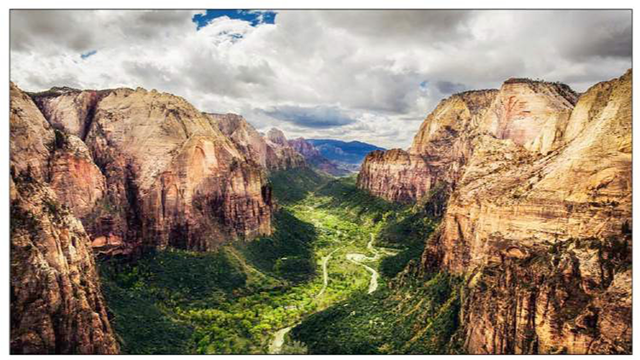
Figure 6.12: This desert river valley is environmentally circumscribed, there is limited amount of agriculturally rich land surrounded by formidable borders
Carneiro argued that his explanation worked for ancient civilizations worldwide, but he believed coastal Peru was the best example of circumscription at work. The coastal river valleys are some of the most circumscribed areas one could find. But as this theory was published, archaeologist David Wilson aimed to test it in the Santa Valley of Peru. Wilson found that there was little evidence of competition among early autonomous villages. He found that there was constant interaction with other groups and valleys in the form of early interaction networks, but not warfare or competition. He also found that coercion and warfare appeared relatively late (around AD 400), long after the first complex societies. Lastly, it is very difficult to “prove” population pressure archaeologically. We may be able to demonstrate that populations were growing through a proliferation of sites that were increasing in size, but whether these populations had outstripped their resources is very hard to say. While these are major issues, it is hard not to see that many of the first complex societies around the globe arose in circumscribed environments (e.g. Mesopotamia, Egypt, and Peru), and it may have been one factor among many in some of these societies, but cannot be a universal or “prime mover” explanation for the rise of complexity.
The origins of complex society have often been linked to growing trade in raw and manufactured (crafted) goods. William Rathje, studying the Maya region, argued that complexity developed in areas that were “resource-poor” or lacking in important raw materials (Figure 6.13). In the case of the Maya lowlands this would be material like
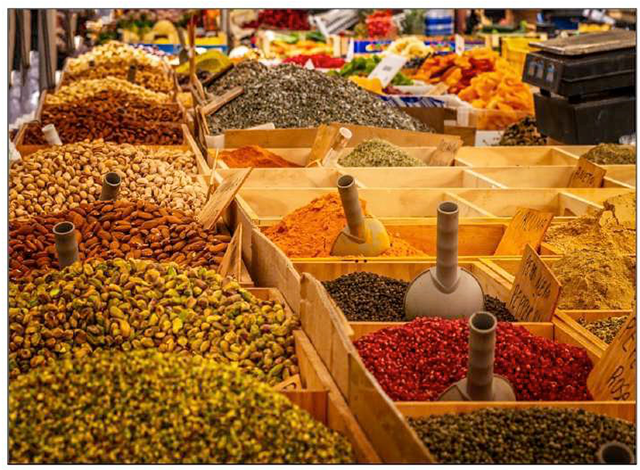
Figure 6.13: Archaeologists like William Rathje argued that management of the exchange and distribution of resources – sometimes in markets like these – may have been responsible for the development of complex society in some areas of the world
obsidian, stone, salt, and timber. To acquire these resources, some members of society became traders, and through time, by virtue of their control over necessary resources, traders acquired prestige and became leaders. Increasing trade promoted increasing specialization, and a growing division of labor in society. Class differences emerged between the elites, those who controlled trade operations and access to resources, and non-elites, the farmers and others who contributed their labor and crops to support trade-based elites.
Theories with greater explanatory power focus on trade in prestige (or “luxury”) goods in the rise of civilization. For example, Colin Renfrew explained the rise of Minoan civilization (ancient Crete) by intensified trade in olives and wine, goods that were not necessarily “needed” but were highly desired by people in the Mediterranean region. In such cases, as in ancient Mesopotamia and Mesoamerica, increasing interaction and trade promoted economic diversification, and resulted in increasing economic interdependence between sites and regions. Most important, in most regions it was the elites who managed long-distance trade in prestige goods, and who controlled access and use of highly valued goods (like copper, jade, iron-ore, quetzal feathers, and precious stones). Increasing interaction, therefore, promoted and increased the prestige of ruling elites. Trade did this by assuring elite access to valued goods that enhanced their prestige and sacred power (in wardrobes, ceremonial objects, and exotic ritual paraphernalia), and by fostering an “international” elite class that interacts across regions.
A major problem with trade theories is that large-scale trade networks and craft production seem mainly to appear after the rise of social complexity. Therefore trade networks may best be considered an effect rather than a cause of complexity. Scholars have also critiqued Rathje, questioning whether there really was demand for the goods that he cited (obsidian, salt, and volcanic basalt for grinding stones). Scholars have made arguments that there were suitable alternatives in the Maya lowlands, including chert for cutting, salt from burning plants, and limestone for grinding tools. Others have said that there is really no evidence for elites controlling or stockpiling these items. Again, even though trade was probably not a prime mover, it cannot be discounted as part of the power of early leaders.
During the 1960s, some archaeologists began to think of civilizations as “cultural systems” made up of interacting elements or “subsystems.” These subsystems included technology, agriculture, social organization, religion, trade, specialized production, and so on. In systems theory, societies change and adapt very much like living organisms, and states are essentially highly complex “living systems.” Systems theorists examine changes in society (such as increasing complexity) as “social processes” rather than a simplistic series of historical events. That is, they focus on the rise of civilization as a series of changes fostered by the interaction of two or more of a society’s subsystems. Any social system forms part of a larger “ecological system” that is in flux, so social change is often an adaptive response to shifting environmental conditions (Figure 6.14). Drastic change in any part of the system (through increasing warfare, population pressure, or
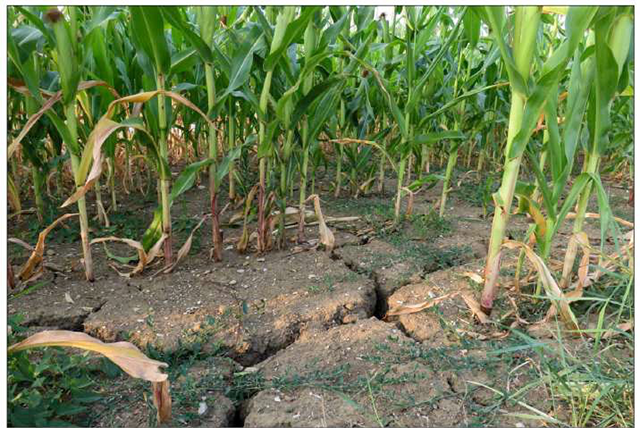
Figure 6.14: Shifting environmental conditions, such as drought, can easily create stress in other parts of a society’s subsystems
environmental change) creates stress, and fosters the creation of new “coping mechanisms” (policies or institutions). Of course, if the stress is too great, or the system fails to adequately cope, the system can collapse and disintegrate.
To understand the nature of any social system we need to examine two primary things. First, we must understand how subsystems related to one another. Often, one or two subsystems (religion and environment) contain elements (religious beliefs and productive technologies) that pervade society and link together many of its various domains. Second, we must understand the nature of a society’s “control apparatus,” or form of government. For systems theorists, rulers in most civilizations have a “managerial role” in society. That is, their role is to ensure the survival of the state and the overall wellbeing of the society. A ruling government balances various needs that develop in the system, particularly in the face of stress and change, and it keeps all of the variables in a system within a healthy range of deviation. States, as complex adaptive systems, maintain highly specialized governing bureaucracies to deal effectively with a society’s various needs and stresses.
Although systems theory is more complex than the above theories and can account for many simultaneous processes that may have contributed to the rise of social complexity, it still focuses almost exclusively on larger social processes (such as irrigation, trade, or warfare) rather than on the power or agency (the transformative capacity) of individuals. For this reason, it has been heavily critiqued by “post-processual” archaeologists, who tend to look more at the power of persons or groups for driving social change.
As you can see, none of these theories explain the rise of complex societies or primary states in all times and all places, but they do outline some major processes in their development.
Now that we’ve defined what a complex society is, offered some correlates for finding them in the archaeological record, and examined some hypotheses for their development, we’ll offer a case example to show how archaeologists study complex societies in the past.
Focus: The Classic Maya
The Classic Maya lived in an area of the world called Mesoamerica. This was a term coined by anthropologist, Paul Kirchhoff, in 1943 who argued this area represented a geographical region, or group of regions whose inhabitants shared a basic cultural unity at Spanish conquest in 1521. The modern countries encompassed by Mesoamerica include Central and Southern Mexico, Guatemala, Belize, El Salvador, and parts of Honduras (Figure 6.15). Some of the unifying traits identified by Kirchoff were human sacrifice, blood sacrifice, hieroglyphic writing systems based on glyphs, calendar systems which incorporate a 260-day ritual calendar, fatalistic religion, repeating cosmic cycles of creation and destruction, stepped pyramids, and an intensive agricultural system based on the farming of corn, beans, squash, and chili peppers.
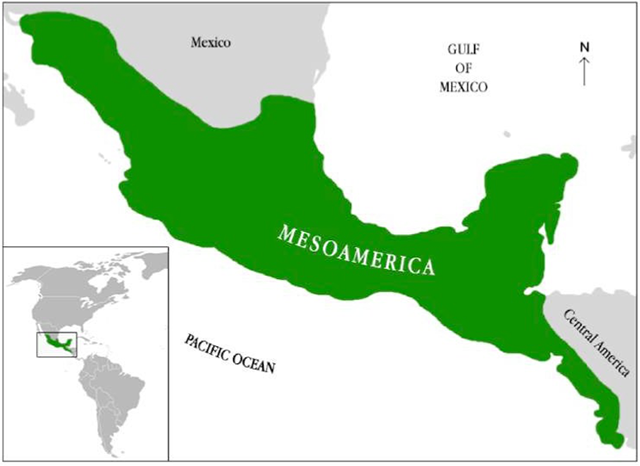
Figure 6.15: Mesoamerica is located in Central America and is composed of parts
of all of the modern-day countries of Mexico, Guatemala, Belize, Honduras, and
El Salvador
Mesoamerica is one of the seven areas of primary state formation and a number of complex societies arose there before the time of western contact. These complex societies include the Olmec located on the Gulf Coast of Mexico; Zapotec in the Valley of Oaxaca, Mexico; the city-state of Teotihuacan just outside of modern day Mexico City; the Ancient Maya of Guatemala, Belize, Mexico, Honduras, and El Salvador; the Aztec Empire with the capital city of Tenochtitlan which is now Mexico City; and the Zapotecs in Oaxaca, Mexico.
Mesoamerican geography was diverse and influenced development of complexity in this area. To the west and south were high hilly and volcanic areas of central Mexico, and southern and central Guatemala. These “highlands” provided important resources to the inhabitants of Mesoamerica like volcanic glass (obsidian) for stone tools, jade for ritual and prestige objects, and quetzal birds whose beautiful blue feathers were used in ritual regalia. To the north in Guatemala, Belize, and parts of Mexico were the dense tropical lowlands where Classic Maya cities rose and fell. Even further north were the more arid desert-like northern lowlands, home to Post Classic Maya cities like Tulum and Mayapan.
Archaeologists have split the history of Pre-Columbian complex societies into roughly three chronological time periods: the Preclassic or Formative period (1500 BC – AD 250, the Classic period (AD 250-900), and the Postclassic period (AD 900-1521). Each period is subsequently split into smaller periods of time, which usually include “early”, “middle”, “late”, and in some instances “terminal” facets. These time periods are defined by qualitative and quantitative changes in material culture over time (e.g., ceramic styles, architecture, settlement patterns, and art).
The Classic-period Maya occupied the southern Maya lowlands, which stretched from eastern Mexico through Guatemala and Belize to western Honduras. The Classic period is defined by the beginning and end of dated monuments using the Maya Long Count Calendar, approximately AD 250 through AD 900. During this time divine kings ruled political units whose boundaries blurred, but whose centers were focused on civic-ceremonial sites. The Classic Maya economy was agrarian, and while royal families extracted tribute from conquered polities and commoners, there is little evidence they controlled the staple economy. The power of ruling families resided in their claim to divine authority, organization of state-sponsored ritual, and ability to amass a military. Throughout the Classic period larger polities (Figure 6.16) allied and warred with one another directly or through proxy polities. These separate Maya polities were never unified and organized through one centralized city of power. Therefore, it’s inappropriate to call Maya an empire (a territorially expansive and extensive group of states ruled under a single supreme authority).
But how do we know all this about the Maya? The material culture that they left behind allows archaeologists to reconstruct their social, economic, political, and religious systems. We discuss some characteristics of their material culture in the next section then explain what we know about Maya culture from years of analysis and interpretation.
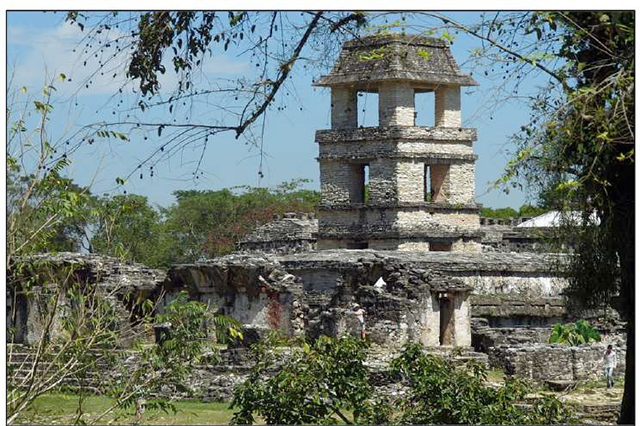
Figure 6.16: The site of Palenque, Mexico was a powerful and influential Classic-period Maya polity
Maya material culture
The Maya left behind all kinds of material culture that allow archaeologists to study the ways they lived and thought. Maya material culture includes architecture, monuments, art, writing, pottery, stone tools, shell, animal bone, and human bone. Specialists working in each area of artifact analysis spend their lives studying a class of material in an effort to interpret the different kinds of archaeological contexts discussed in Chapter 5 (archaeological, chronological, use, and spatial).
Epigraphy is the study and interpretation of ancient inscriptions. Maya epigraphers specialize in analyzing and interpreting the inscriptions on painted pottery, mural paintings, stone monuments, and carved into small objects (Figure 6.17). They have detailed knowledge of the Maya system of hieroglyphic writing. It has taken over one hundred years for epigraphers to decipher Maya hieroglyphic writing and there are many inscriptions that we still don’t understand. Like any language, Maya glyphs changed over time and from region to region making it challenging for epigraphers to understand what the Maya were saying on their artifacts from period to period, and site to site. What we do know is that Maya used a combined phonetic and logographic system of writing – meaning Maya glyphs were made up of symbols for both speech sounds (like the English alphabet) and word signs (like Mandarin Chinese). Hieroglyphic texts tell us mostly about the histories and lives of the elite – kings, queens, sub-royal governors, and warriors.
Epigraphic analyses of glyphs have helped us understand the political histories of many Maya polities during the Classic period, but they don’t tell the whole story. Other kinds of material culture let us know more about how the Maya lived.
Artifacts of stone, pottery, shell, and bone can tell us a great deal about how the Maya went about their daily lives. Ceramicists are specialists in the analysis and interpretation of pottery (Figure 6.18). They study the combinations of clay and temper used to make
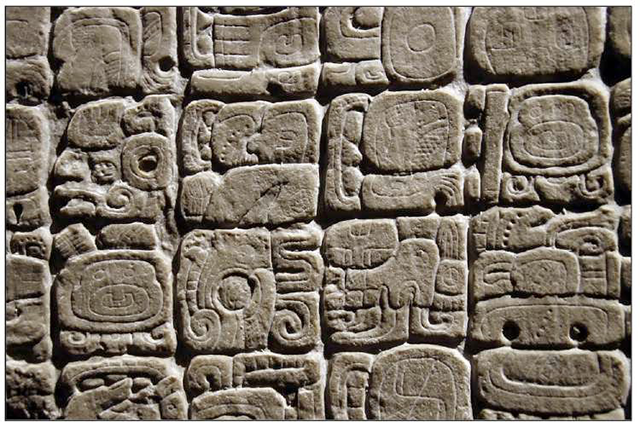
Figure 6.17: Maya epigraphers can decipher and read aloud glyph blocks like these
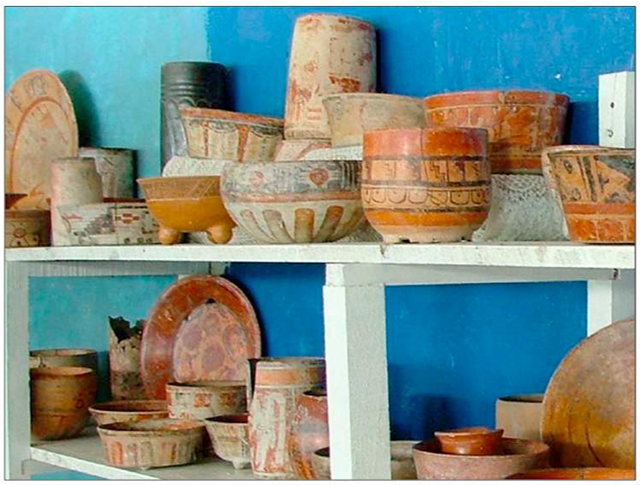
Figure 6.18: Ceramicists study characteristics of pottery vessels to answer questions about how the Ancient Maya lived
ceramic artifacts (like pots or figurines), the different kinds of ceramic forms, the types of decoration used on pottery, and the ways in which the Maya fired their pottery in open pits or more rarely in closed kilns. Use a suite of techniques ceramicists can measure the degree of ceramic craft specialization at a site. They can see if one site was trading ceramics with another. They can even see if a certain kind of pottery was restricted to particular segments of society – like the most exquisite polychrome or multicolored vessels that displayed Maya inscriptions, which were only circulated among the elite.
Lithicists are specialists in the study of stone tools. They analyze and interpret artifacts made from chert (often called “flint”), obsidian (Figure 6.19), jade, limestone, and ground-stone used for making the metates and manos (stone grinding boards and grinding cylinders) used in grinding maize kernels. Like ceramicists, lithicists use a combination of techniques to reconstruct the ways the Maya made their stone tools, analyze trading patterns, identify sources of stone, and measure the degree of craft specialization within a stone tool industry.
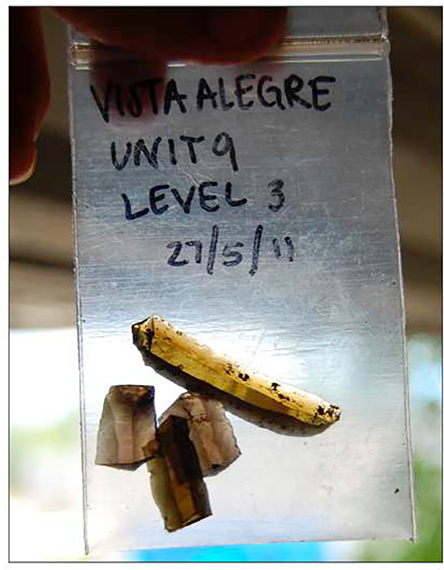
Figure 6.19: Lithicists study stone objects like obsidian blades found in an excavation at an ancient Maya site
Osteologists study human bones. They carefully excavate, analyze, and interpret bones from Ancient Maya burials (Figure 6.20) in an effort to study the ways in which the Maya lived impacted their bodies. Osteologists analyze bones to reconstruct demography or the study of statistics such as births, deaths, disease, and nutrition of the Maya, all of which illustrate the changing structure of the Maya population.
Faunal analysts study the bones of animals and shells from fresh water and saltwater fish that Maya ate or used in some other way. Through analyzing and interpreting the amount and type of animal bones and shell at a site (Figure 6.21), faunal analysts can reconstruct Ancient Maya diet and their cultural constructions about eating. They can even determine if certain kinds of food were restricted to certain classes of society at any one time. For example, they have found that deer meat was more restricted to the Maya elite during the Late Classic period in the southern lowlands.
Figure 6.20: Osteologists are experts in the study of human remains such as this discovery in a Mesoamerican cave
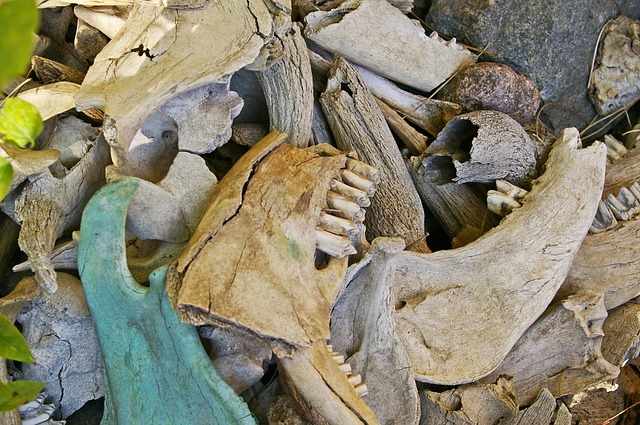
Figure 6.21: Animal bones like these are organic ecofacts that faunal analysts used to tell us about ancient Maya diet
Other specialists include soil scientists who use ecofacts to study the Ancient Maya environment and climate. Conservators carefully and meticulously piece back together a whole range of artifacts (Figure 6.22) so they can be safely stored in lab facilities or put on display at museums. Finally, surveyors or mappers are responsible for a suite of techniques to create maps of the Maya world from the location to artifacts in a test pit, to the location of test pits in a site, to the location of sites to one another across the lowlands. They use these data to reveal patterns about where and why the Maya established their cities where they did on the landscape – frequently near access to fresh water (like rivers, lakes, or natural springs) and sometimes in defensible locations (on hill tops, islands, or peninsulas in lakes). Through the combined work of all these specialists, archaeologists are able to piece together the daily lives, behaviors, and beliefs of the Ancient Maya. We turn to some of those now.
Figure 6.22: This conservator injects line plaster into a damaged stucco wall deep in an underground excavation
Maya worldview
Archaeologists excavate and analyze material culture to learn something about human behavior and beliefs in the past. However, in this section we’d like to reverse this process when we talk about the Ancient Maya. Instead of using Maya material culture to tell us about how they lived, we’re going to begin with telling you about how the Maya lived and then show you how this is reflected in Maya material culture. We find this format more presentable and accessible, and it allows us to show you patterns of behavior and belief then demonstrate those patterns through Maya material culture.
In order to understand how the Ancient Maya lived, we want to first show what they thought. Classic Maya worldview combined aspects of Maya religion and ideology. Religion is a belief system focused around the worship of supernatural forces that involves the telling of myths and performance of rituals. To the Maya, those supernatural forces were a pantheon of gods, demi-gods, and sacred ancestors. There were many Classic Maya myths (stories about culture-heroes real or imagined), but one stands out as being particularly significant – the story of the Hero Twins from the contact period Maya “book of council” or Popol Vuh. We will return to this myth below. Classic Maya rituals (religious ceremonies consisting of a series of actions performed according to a prescribed order) focused on the worship of gods, veneration of ancestors, and re-enactments or allusions to the myth of the Hero Twins in the Popol Vuh.
Ideology is a set of beliefs that justifies the behaviors of a certain group of people. When this group of people is the ruling class of a complex society (in the past or present), this set of beliefs is often referred to as the “state ideology” or “dominant ideology”. A dominant ideology reinforces social hierarchies and justifies why the dominant group has authority, receives more resources than everyone, and occupies a privileged position on the social spectrum. Classic Maya dominant ideology focused on the sovereign and his or her divine right to rule a city, extract tribute, and marshal an army. This Classic Maya worldview – a combination of religion and ideology – was reflected in the way the Maya structured their settlements, to the agricultural crops they depended on for surplus, to the way they created art and writing, and finally to the way they interred their dead. We take a look at some examples of material culture in a moment, but for now we want to show you how this worldview was also reflected in myth of the Hero Twins from the Popol Vuh.
The actual manuscript of Popol Vuh is a post-conquest period text written in the early 18th century AD by a collection of anonymous Post-classic period Maya scribes from the highlands of Guatemala. It has been referred to as the Ancient Maya bible, but this is misnomer. The text (Figure 6.23) was compiled by Dominican priest, Francisco Ximenez, as part of an effort to understand Maya belief systems in order to convert them to Christianity. Even though the text was transcribed in the early 1700’s, it contains stories that are reflected in Maya material culture going all the way back to the Preclassic period. The manuscript is separated into three sections: a genesis or creation story, the myth of the Hero Twins, and an account of the origins of the Postclassic K’iche Maya who were responsible for writing the story and who occupied the area of Guatemala where Ximenez was conducting his missionary work.
The myths in Parts 1 and 2 of the Popol Vuh resonate with three themes: 1) reciprocity between the gods, ancestors, and humans, 2) ancestor veneration through sacrifice, and 3) cyclicality and regeneration. In Part 1, the genesis story, the Popol Vuh recounts the story of how the gods created the earth – separating the land from the sky and water. They then begin creating living things, first animals and then two generations of human- like creatures who they subsequently destroy. The Popol Vuh emphasizes that the creator
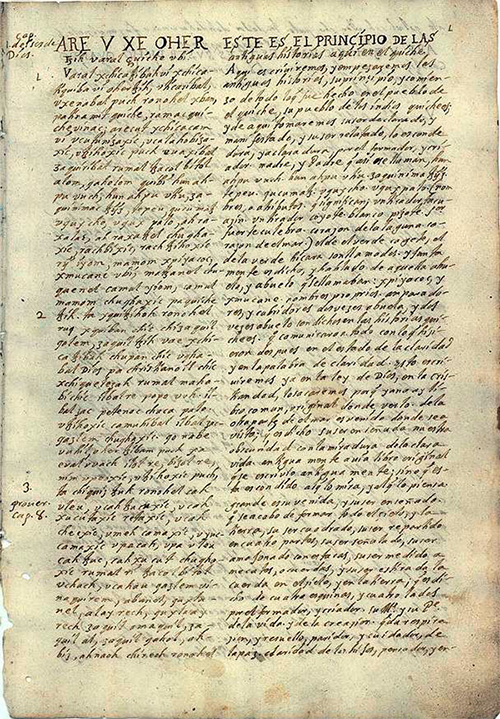
Figure 6.23: A page from the oldest surviving written account of the Popol Vuh
gods began making living things because they were lonely and wanted a living thing to care for, and for that living thing to care for them. The gods destroyed the first two creations of human-like beings because those creatures could not or would not give the gods praise. That is, these living things could not or would not enter into a reciprocal relationship of thanks and praise with the gods. Part 1 concludes and pivots to Part 2 where we find a series of demi-gods who inhabit the earth. The main characters are two ballplayers named Hun-Hunahpu and Vucub-Hunahpu or “One-hunter” and “Seven-hunter.” They are hunters and ballplayers. The myth tells the story of how these twins were asked to play a game against the Lords of Xibalba, the Maya underworld. The twins are tricked and killed in Xibalba. Hun-Hunahpu is decapitated and his head hung on a tree in the underworld. Shortly after the daughter of one of these lords goes to visit the tree despite her father’s command not to. Hun-Hunahpu’s head begins talking to the girl and tells her to hold out her hand. When she does, the head spits in it, and causes her to become pregnant with twins. Upon hearing of what she has done, her father orders her to be killed, but she escapes to the surface of the earth where she finds the twins’ mother. The girl gives birth to Hun-Hunahpu’s twin sons and they are named Hunahpu and Xbalanque (Figure 6.24). The Popul Vuh then goes on to tell the story of how these twins become ballplayers and defeat the Lords of Xibalba through self-sacrifice and magic. Once they defeat the Lords of the underworld, their father is resurrected as the maize god. The creator gods have been watching all of this unfold and once the maize god rises from the underworld, they are so please with the display of reciprocity through sacrifice and ancestor veneration that they decide to create humans out of a combination of corn, cacao, and other natural materials. The Hero Twins then become the moon and sun, Venus and the sun, or some other combination of celestial bodies depending on the version of the myth.
Figure 6.24: Xbalanque (left) and Hunahpu (right), the Hero Twins of the Popol Vuh
The myth of the Hero Twins from the Popol Vuh resonates with the three themes of reciprocity, ancestor veneration through sacrifice, and cyclicality and regeneration. The gods create living beings to love and receive love. The Hero Twins venerate their father by sacrificing their lives for him and avenging his death. The twins are then reborn, defeat their enemies using their wits and magic, and their father is resurrected as the maize god. While aspects of the actual myth may appear in art and writing, the three themes of the myth are also reflected in all manner of Maya material culture (Figure 6.25) – from settlement patterns, to pottery, to lithics, and burials. We’ll take a look at how Maya material culture reflected this worldview in the next section.
Figure 6.25: Stone monument from site of Tonina shows two elite men playing ball
The Maya world
The emphasis on kinship (family membership) and ancestor veneration can be seen in the way Classic Maya organized and constructed their households – from commoners to the most elite royal families. The Maya lived in household groups or clusters of living structures centered on a patio (Figure 6.26). Commoner household groups would be made by organizing anywhere from two to four house platforms (mounds of earth or a few layers of stone) so that their entrances faced a shared open space. A perishable superstructure of wood or poles and thatch roof would be constructed on the foundation. Traditionally, scholars have suggested the Maya were patrilineal, meaning they reckoned descent through the male line, and also lived in groups of patrilineal related extended families (however, this interpretation of descent remains problematic as we note below). When the family grew through the addition of marriage another house would be added. This would continue until the patio became closed off and the family would then expand the house group to the north, south, east or west creating more patio groups. The importance of ancestor worship is seen in where the Maya placed their burials. Deceased relatives would be buried in or around house platforms. Depending on the site and time period the pattern is different, but Classic period burials are almost always found within the house platforms directly beneath the floor or just off the mounds on the back, patio, or sides of the house platforms. This was a way the Maya kept their ancestors close to them. This pattern is reflected in the way elites created their households as well. At the Classic-period city of Tikal, the Great Acropolis is nothing more than a giant patio group (Figure 6.27). The palace where the royal family lived is on the south side of the patio while to the east, west, and north there are temples (like household shrines) that housed the bodies of kings and queens who came before.
Figure 6.26: This organization and construction materials of this contemporary Maya patio group is similar to what the Ancient Maya would have built in the past
Figure 6.27: The Great Plaza at Tikal is nothing more but a commoner patio group built on a grand scale
Ancestor veneration through blood sacrifice, and the reciprocal covenant between the gods or ancestors and the living, is reflected in much of the monumental and portable material culture of the Classic Maya. Numerous examples of Maya art depict kings and queens sacrificing their own blood using sharp stone bloodletters or stingray spines.
Blood was seen as the most sacred offering a person could give to the gods and ancestors, Royal blood was the most sacred because it came from a line of divine kings. A K’uhul Ajaw or “Holy Lord” (i.e., king) of a city would perform private blood sacrifice by piercing a part of his body, often his genitals, and letting the blood drip onto piece of bark paper that had been collected in a ceramic bowl. The paper would then be lit on fire. The smoke would rise upward and eventually be consumed by the gods and ancestors in the celestial levels of the Maya cosmos. Out of the smoke would also appear a vision of deceased ancestor, often depicted in Maya art as emerging from the head of a serpent or centipede (Figure 6.28). Some archaeologists interpret male genital bloodletting as a way for men to “give birth” to ancestral visions. Royal women including queens and holy lords also
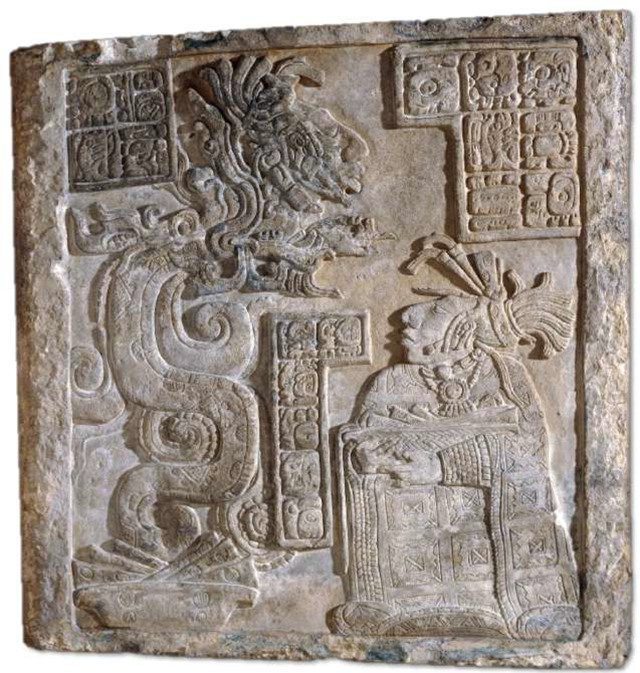
Figure 6.28: A Queen from Yaxchilan, Mexico has just let blood onto pieces of bark paper collected in a ceramic bowl. While burning the bloody paper the image of an ancestor appears to her in the smoke
performed auto-sacrifice through piercing their lip or tongue with a needle, or a rope of thorns (Figure 6.29). The images of Maya blood sacrifice are so ubiquitous that the idea they actually practiced this form of sacrifice becomes undeniable. Scenes of blood sacrifice appear on just about every class of artifact, and archaeologists often find the tools used to perform bloodletting like obsidian blades, chert blades carved in eccentric forms with emerging god profiles, and jagged stingray spines. Blood sacrifice was an obligation that every king and queen had to perform, and as such, was part of their royal duties.
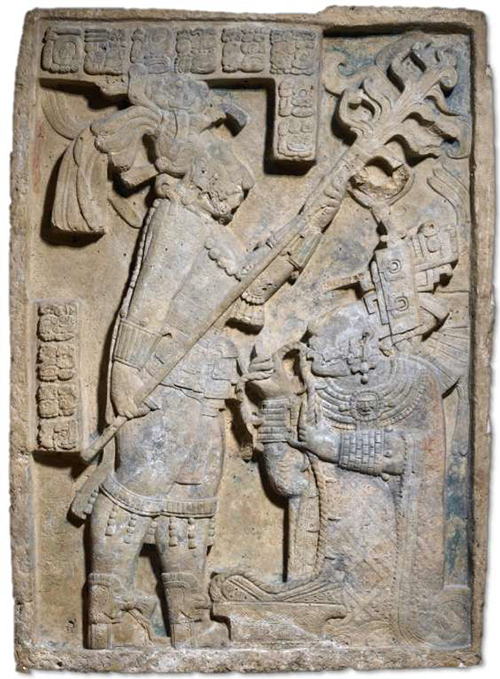
Figure 6.29: In this carved lintel from Yaxchilan, Mexico a queen lets blood by pulling a rope of thorns through her tongue
Of course, kings and queens also sacrificed other people. There are many scenes of captive sacrifice on murals, monuments, and pottery. Archaeologists argue that the need to acquire captives was one of the primary reasons for Classic Maya warfare. In addition to conquering another polity in order to extract tribute, Maya kings wanted to secure captives they could bring back to their city for public sacrifice. One of the most famous scenes of public captive sacrifice comes from the Late Classic city of Bonampak, Mexico. Here in the Temple of the Murals, brightly painted scenes on all four walls of three contiguous rooms display a prolonged narrative where a Late Classic king ascends to his throne, goes to war, comes back and sacrifices captives, then holds a ceremony (Figure 6.30). Many times before they were sacrificed, captives (primarily warriors from the losing polity) were forced to engage in a ballgame, which they could not win, and resonated with themes of sacrifice of the Hero Twins from the myth of the Popol Vuh.
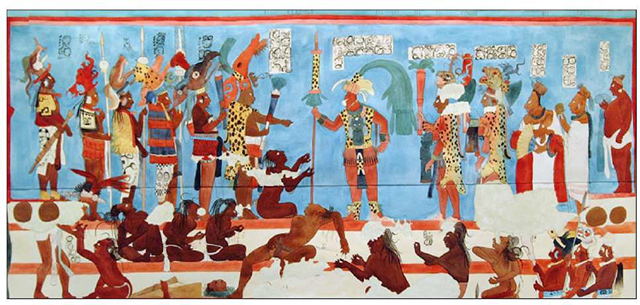
Figure 6.30: This famous mural from Bonampak, Mexico shows tortured and humiliated captives being presented to a king
The Maya ballgame was a version of the larger Mesoamerican ballgame that has its roots in the Preclassic period. We know much about the Maya ballgame because of the material culture that the Maya left behind. The game was played in a particular architectural group comprised of two parallel buildings whose facing sides sloped inward (Figure 6.31). The buildings created a playing alley that could be delimited by three round stones set into the ground. These stones, or ballgame markers, usually had images and glyphs carved on them showing kings playing the game or famous captives who had lost and were about to be sacrificed. Two teams of at least one to about four players would face off against another using their hips and torso to bounce the ball back and forth. Points could
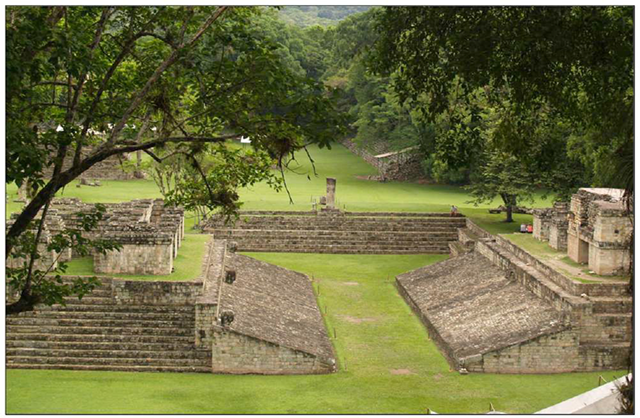
Figure 6.31: This ballcourt is located at the Classic-period site of Copan, Honduras
be scored in different ways depending on the type of ballcourt and series of ballcourt markers. The ballgame was no ordinary game to the Maya, it was a sport of life and death, resonating with the themes of reciprocity, ancestor worship through sacrifice, and cyclicality and regeneration from the Popol Vuh.
All these rites were performed in an effort to communicate with the metaphysical world. Material culture tells us that the Maya conceive of their universe as existing on vertical and horizontal planes. The vertical axis was often portrayed in Maya art as a tall tree with its roots in the ground (Figure 6.32). This tree was referred to as the Wacah Chan, world tree, and axis mundi of the universe. Occupying the lower level was Xibalba, the Maya underworld, where the lords of death and disease resided. Xibalba was also where Maya souls went when they died. It was no place of rest, but a nightmarish dimension where souls needed to escape from. They did this through being venerated by their living kin on earth. When Maya souls are venerated they are transported to the heavens or a place known as the white flower mountain, above the earth, in the celestial heavens. On the horizontal plane, the Maya separate their cosmos according to the four cardinal directions and related different colors and meanings to each direction. The east was related to the sun, warmth, and the color red; west was related to night, darkness, death, and the color black; north was related to the ancestors and the color white; and south was related to the right hand of the sun and the color yellow.
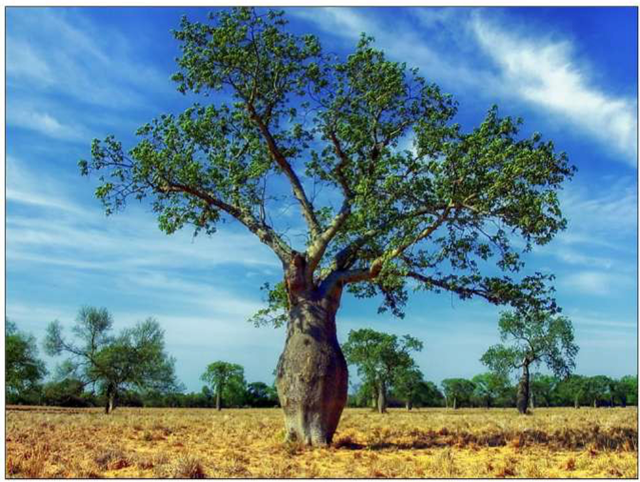
Figure 6.32: The Maya conceptualized the vertical axis of their cosmos as a giant Ceiba tree like the ones that grew all around them
A K’uhul Ajaw could traverse the different dimensions of the cosmos by going into trances and communing with the ancestors. They accomplished this by reaching altered states of consciousness through engaging in sensory deprivation, alcoholic intoxication, and consuming psychedelic substances like mushrooms and toxins from the Bufo marinus toad. When they went into these trances, shaman kings were not only traversing the different levels of the cosmos on the world tree, they were thought to actually become the tree itself. That is, through trance and ancestor veneration shaman kings actually became the center of the universe. This idea is portrayed on Maya stelae as kings stand with their feet like roots on the ground, holding a ceremonial bar at their chest to represent the earthly plane, and adorned with a headdress made from bird feathers symbolizing the celestial realm (Figure 6.33).
Another way to commune with the gods and ancestors was the Maya calendar. To the Maya, time keeping was inextricably linked to the metaphysical. They believed the night sky was actually Xibalba turned upside down on the earth when the sun set in the west. Stars were not pinpricks of light, but gods and ancestors. By keeping track of planets and constellations the Maya were able to observe the gods and ancestors in Xibalba. The Classic Maya had multiple calendars that they used to keep track of celestial bodies and stars. One of the most important was calendar called the tzolkin and made up of 13 numbers and 20 named days that would not repeat for 260 days. The haab was the Maya
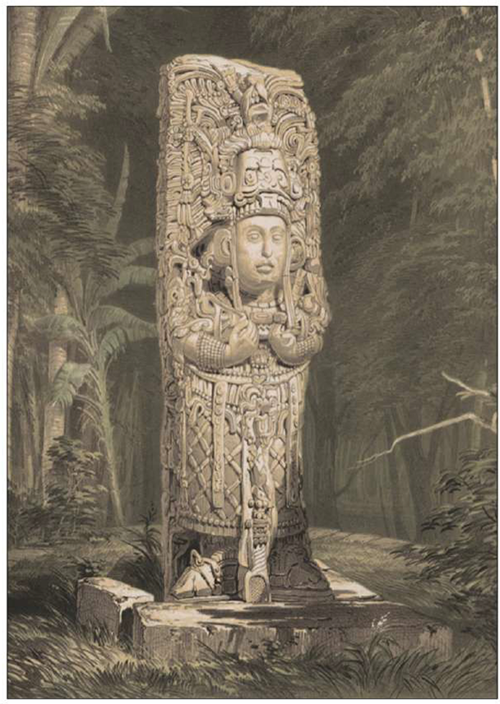
Figure 6.33: This Maya king from has been immortalized as the Wacah Chan in this stela from Copan, Honduras
version of the solar year with 18 months of 20 named days, and one extra month of 5 days. The combination of the tzolkin and haab was called the Calendar Round, which would not repeat for 52 years. The Long Count (Figure 6.34) was most similar to our Gregorian calendar, which counted backward, and forward from one fixed point in time.
For the Maya that was the date of creation on August 13, 3114 BC. The Maya counted forward and backward in units of time, with larger units based on intervals of 20. A kin represent one solar day while a uinal represented a month 20 days. Eighteen uinals plus one more of 5 days equaled a tun or one solar year. Twenty tuns was called a katun and 20 katuns (400 years) was called a baktun. The Maya wrote calendar dates in the Long Count and Calendar Round on their monuments, allowing archaeologists to date the narratives in the texts. A common popular misconception about the Maya was that they
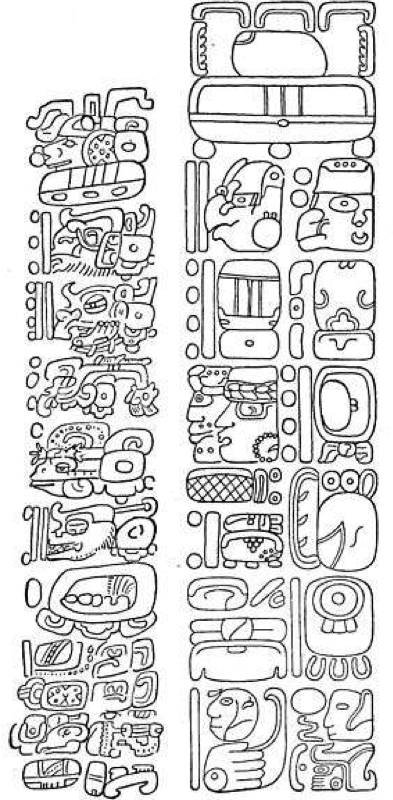
Figure 6.34: The Maya Long Count would appear in glyphs like these on monuments and sometimes pottery
believed the world would end in December of the year 2012. This was never the case as multiple monuments from the Classic period actually display dates projected far out in the future. The Maya 2012 phenomenon was nothing more than a pseudo-scientific myth.
While the Maya did not believe in the 2012 apocalypse, they did experience a societal collapse of their own that began at the close of the 8th century. By AD 900 the cities of the southern lowlands had been abandoned and were never reoccupied again. So what happened? Where did the Maya go? What caused the Maya collapse? We turn to these questions in the next section of the chapter.
Explaining the Maya collapse
Collapse occurs when a complex society breaks down abruptly or disintegrates over a certain period of time. Some complex societies collapse and transform or transition into another way or life – maybe even another type of complex society (as in the case with Maya as we will see below). However other complex societies collapse and leave little or no trace of their earlier form – like the Indus Valley civilization. Collapse is often studied from the perspective of systems theory. Some part of the diverse and integrated complex society breaks down or fails slowly over time or suddenly. This causes strain on other parts of the system. If the other parts can’t alleviate or accommodate the strain they too begin to fail. Causes for failure or strain can come from outside the system (e.g., droughts or foreign invaders) or from within (e.g., class conflict or inherently flawed sub-systems). What is true for the development of complex societies is also true for their collapse – there is no one single cause – much less a universal cause for societal collapse. In the case of the Maya, material culture has shown that what caused society to collapse was a combination of internal and external factors including the nature of Classic Maya politics, demographic pressure, environmental factors, and endemic (internal) warfare.
Classic Maya polities were centered in cities with emblem glyphs – hieroglyphs that symbolized the place name and ruler for each polity. A king or queen, who were members of a dynasty (line of hereditary rulers), ruled each polity with an emblem glyph. Because the Maya were patrilineal, one of the king’s sons would ideally inherit the throne. Traditionally, scholars believed the Maya practiced a system called primogeniture where the first-born son of a king was supposed to inherit the throne. In order to ensure that there was a male heir (in addition to securing social, political, and economic alliances), Maya kings would marry more than one woman. When a marriage consists of multiple spouses this is called polygamy. The Maya practiced a form of polygamy called polygyny in which one man would marry multiple women. There are two inherent problems with this kind of inheritance model. First, because men were having children with multiple wives, over time the amount of royal children with no thrones to occupy increases, which could lead to envy and fighting among siblings. Second, it is important to remember that primogeniture was a norm of Classic Maya political authority and highly valued. Like all norms and values, primogeniture served to guide political behavior, but royalty did not need to agree with it or even to follow it. This interpretation becomes complicated by the fact that Maya queens were documented as becoming K’uhul Ajaw. And example is the famous “Lady Six Sky” of Late Classic-period Naranjo in Guatemala. At other times, male K’uhul Ajaw did not legitimate their right to rule through their father’s line, but their mother’s line. This is the case of the powerful Lord of Late Classic-period Palenque, Mexico named Pakal. Maya royalty may not have strictly followed patrilineal descent, but may have practiced ambilineal descent, a form of cognatic descent where individuals can switch between patrilineal and matrilineal descent. This is common among royal families and is easily recognizable in the current British monarchy. Regardless of this debate, there are frequent occurrences in Maya texts that were written before the collapse about sons of kings who fought one another for the thrown of their father. In the Early Classic period and earlier parts of the Late Classic period, the feud would have been settled by having one son marry a royal woman from another site. The new couple might rule the site where the woman hailed from because there was no male heir to the throne. Or perhaps the couple was sent to conquer territory and establish a new polity in a foreign area. However by the end of the Late Classic there is no more land to conquer and nowhere left to send feuding royal offspring. In the words of Carneiro, the Maya lowlands had become social and physically circumscribed.
In addition to the internal political problems, demographic and environmental data suggest the population of many Maya polities had exceeded the resources limits of the surrounding areas. In short, there were not enough resources to create a surplus and fuel the cities at the centers of each polity. Furthermore, some data show that there was a prolonged drought during the end of the Late Classic period, which would have further compounded local resources problems. These conditions may have been what caused widespread endemic warfare in the Maya lowlands, which has been documented at a number of large sites and proven to be the immediate cause of collapse in those cities.
One area of the lowlands where warfare was particularly visible was the Petexbatun region of the Pasion River Valley in the Department of Peten, Guatemala. A number of large sites co-existed in the area prior to AD 761 including the regional capital of Dos Pilas and the large sites of Aguateca and Tamarandito. Around AD 761 inhabitants of Dos Pilas began barricading themselves inside the civic-ceremonial center of the site. They tore stones from religious buildings to construct defensive fortifications around the ceremonial precinct of the site. They built a wall over a sacred hieroglyphic staircase. They even created “killing alleys” around the ceremonial precinct. These were concentric rows of parallel-palisaded walls that created a maze around the site’s core. The inhabitants of Dos Pilas would lure invaders into the mazes, close the exits, and shower projectile points down upon them. Dos Pilas was abandoned shortly after the events of AD 762. In nearby Aguateca, invaders appeared to destroy the city in one large or multiple single events within the course of a short period of time. Buildings were burned, and monuments were smashed. People had no time to flee – a fact attested to by the in situ (original position) of artifacts in houses excavated by archaeologists. Aguateca was abandoned by AD 800. While not every polity in the lowlands succumbed to warfare, they eventually fell. This is because every city was part of a more complex whole – they were essentially part of an ancient global system. When enough polities collapsed, the ones that were left could not sustain themselves without support, and either withered away slowly or were abandoned more abruptly.
It is important to remember that what collapsed was Classic Maya complex society – not the Maya themselves. After the collapse of cities in the southern lowlands, some polities in the eastern lowlands of Belize, northern lowlands of Mexico, and highlands of Guatemala, experienced a period of florescence that would transform into Postclassic Maya complex society. The Postclassic Maya were of the same or similar ethnic orgins of the Classic Maya, but their material culture, behaviors, and beliefs were markedly different. The Postclassic Maya would prove even more resilient by surviving the Spanish Conquest along with everything that came with it (disease, religious persecution, and torture). Today, the contemporary indigenous Maya are a thriving population living in the highlands of Guatemala, the state of Chiapas in Mexico, and western Belize. An integral part of doing Maya archaeology is working with contemporary peoples to help them learn about the past that has been kept from them, and to use archaeology and cultural heritage to help them confront practical present-day challenges that they identify as important.
Review of Learning Objectives
Complex societies are diverse and integrated human systems identified in the archaeological record through the presence of cities, surplus, agricultural intensification, multi-faceted economic and political systems, craft specialization, and institutionalized inequality. Complex societies are not seen before the onset of the current geological epoch called the Holocene. The warmer, wetter, and more predictable weather of the Holocene allowed for advent of plant and animal domestication and eventual adoption of agriculture. There are many hypotheses about the development of agriculture and the rise of complex societies. No one hypothesis can explain the origins of agriculture and development of complexity in all times and places. Complex societies, in the form of primary states, arose in seven core areas of the world: including Mesopotamia, Egypt, China, Minoan Crete, the Indus Valley, Mesoamerica, and South America.
The Classic Maya were a complex society living Mesoamerica who flourished from AD250-900. Maya material culture in the form of settlement patterns, architecture, monuments, art, and artifacts allows archaeologists to study the behaviors and beliefs of the Classic Maya. Classic-period Maya complex society collapse by AD 900 for various reasons including structurally flawed components of their political system, demographic pressure, resource depletion, environmental conditions, and endemic warfare. While the Classic-period Maya complex society collapse, their indigenous descendants still thrive in parts of Mesoamerica today.
References cited:
Flannery, Kent V. 1972. The Cultural Evolution of Civilizations. Annual Review of Ecology and Systematics 3:399-426.
Concept review
- List the key characteristics of a complex society.
- Identify the geographical locations of the earliest primary states.
- List and define the hypotheses associated with the rise of primary states.
- List and define the hypotheses associated with the development of agriculture.
- Define the geographical region of Mesoamerica.
- List and discuss the expertise of some archaeological specialists.
- Define the term “ideology” and how it relates to the Popol Vuh.
- Discuss reasons for the Classic Maya collapse.
Applying concepts
- Imagine you are an archaeologist living 1000 years in the future and you unearth the remains what used to be Orlando, FL dating to the 21st century. How would you determine if Orlando society was complex? Provide examples of specific correlates described in this chapter to make your determination.
- The Popol Vuh is a 16th century Postclassic period Maya text. However, the myths of creation, adventures of the Hero Twins, and the cultural values these stories embody are remarkably enduring in ancient Maya culture. Identify a myth or myths that are important to a cultural group in which you are currently a member. This could be a national culture, an ethnic culture, a religious culture, or any other type of “sub-culture”. What is the story of this myth? How is materialized through physical things? How, where, and when are these things consumed?

